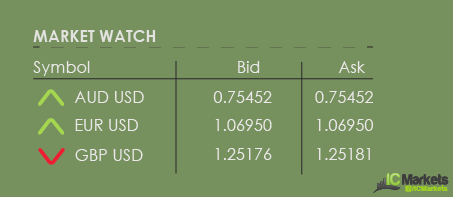There are some things that knock you for six when you hear them, and this is generally the case when one first encounters the foreign exchange markets, or ‘forex’ for short. Followed by the credit (debt) market (think US government bonds, notes and bills here), forex is the largest, most liquid market on the planet – an immense auction house which has a daily turnover of $5.1 trillion (according to the 2016 Triennial Central Bank Survey of FX and over-the-counter (OTC) derivatives markets). Forex is a globally decentralized marketplace, which simply means that there’s no central exchange or physical location. It Operates around the clock five days a week, with the action beginning in Wellington, New Zealand and closing on Friday evening in New York, essentially allowing one to pick and choose when to trade.
Within this mammoth auction house, the forex market caters to investment managers, hedge funds, corporations, individual speculators/investors and international trade. For example, in order for a UK company to import baseball caps from the US, the Brits would have to exchange GBP for US dollars in order for the organisation to be able to complete the transaction.
The main participants, other than government central banks who probably have the most influence, are the large international banks, such as: Citi Bank and JP Morgan. These two organisations recorded the largest overall volume in the forex markets as of May 2016. Now that we have a brief understanding of what the forex market is, how much is traded/exchanged on a daily basis and who the main ‘players’ are, let’s look at what forex trading is from an individual trader’s perspective. If you’ve ever been on holiday to a foreign country, there’s a good chance that you’ve already participated in the forex market, exchanging one’s home currency for that of another.
The forex market is traded in pairs. The EUR/USD, the GBP/USD and the AUD/USD are all considered currency pairs. The ‘base currency’ is the first currency that appears in a currency pair quotation, the EUR, GBP and AUD (highlighted in bold) are all base currencies. The ‘quote currency’, or ‘counter currency’, is the second currency – the US dollar (underscored). So, when we look at the currency quotations provided by IC Market’s market watch platform, one can see that in order to buy 1 unit of GBP, it will cost buyers $1.25181 at current market prices. The ‘ask’ tab represents the current price for buyers, and the ‘bid’ tab denotes the current price offered to sell.

In your forex trading career, you’ll be dealing with a plethora of new terminology. A ‘pip’ is one of the more common terms you’ll hear in the trading industry, which essentially means ‘point in percentage’ or ‘price interest point’. IC Markets uses 4 decimal places to denote a one-pip movement. Using the market watch platform above, we can see that in order to buy 1 Euro, it’ll cost $1.06950. Now, assuming that the market skips to $1.06960, price has just moved one pip higher. Conversely, should the unit decline in value to $1.06900, one is now able to purchase the 1 unit of Euro for 5 pips less than originally quoted ($1.06950-$1.06900). What is the very last number on the currency quotation then? This is called a ‘pipette’, which equals 1/10 of a pip. Therefore, if the EUR/USD quotation above moves to $1.06952 from the current price of $1.06950, we effectively have a 2-pipette advance.
The value of a pip, of course, depends on how a trader sizes his/her positions. This is where the use of leverage and risk management comes into play.
Leverage basically means having the ability to control a large sum of capital using very little of your own funds and borrowing the rest. By way of example, say one looks to trade a $100k position at leverage of 100:1, the broker will set aside $1k from your funds, thus allowing you to take on the larger position. IC Markets offer flexible leverage options ranging from 1:1 to 1:500, which is good news for conservative traders out there. As you can imagine, leverage is a double-edged sword. While high leverage could net one incredibly high gains, it can just as easily wipe you out, highlighting the need to correctly manage risk!
The difference between the bid/ask prices is called the ‘spread’. This is another common term, which basically represents brokerage service costs. Looking at the GBP/USD quotation above, one can see that the spread or ‘cost’ to purchase 1 unit of GBP using IC Markets is around half a pip. The EUR/USD effectively has no spread at the time of writing – very tight indeed! The broader the spread the more expensive it is for one to trade, whereas the thinner the spread the cheaper it is. Liquid and frequently traded currency pairs usually offer a small bid/ask spread, while the more erratic, less traded pairs typically boast a larger bid/ask spread. In addition to this, spreads typically widen during high-impacting news events, such as the mighty US non-farm payrolls report generally released on the first Friday of each month. Technically speaking, spreads widen here due to lack of liquidity. Let’s not forget that a spread is simply the difference between willing buyers and sellers. At times of high volatility, the difference becomes larger and thus the spread is equally increased.












